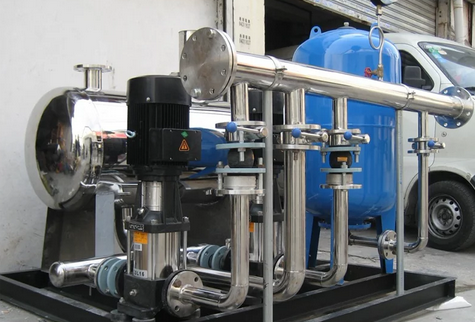The basic process of non-negative pressure steady flow irrigation water supply
The basic process of non-negative pressure stabilizing tank water supply is a complex but efficient process. It mainly relies on the residual pressure of the municipal pipe network and intelligent control technology to ensure that the water supply system can both stably supply water and not generate negative pressure on the municipal pipe network. The following is the basic process of this water supply method:
1. Preparation stage
Equipment inspection: Ensure that the non-negative pressure water supply equipment and its components (such as stabilizing tank, water pump, motor, pressure sensor, etc.) are intact and can operate normally.
Environmental preparation: Select an environment suitable for equipment installation and operation, and ensure that there is enough space, stable power supply and clean water source.
2. Startup and initial state
Water flows into the stabilizing tank: The water source of the pipe network flows directly into the stabilizing tank through the pipe.
Vacuum elimination: Use a vacuum cleaner (or vacuum suppressor) to exhaust the air in the stabilizing tank to ensure that the tank is full of water and in a sealed state. When the water is full, the vacuum cleaner automatically shuts down.

3. Water supply process
Direct water supply: When the municipal pipe network pressure is sufficient and can meet the user's water demand, the system directly supplies water to the water supply network through the bypass check valve. At this time, the water pump may be in standby state.
Variable frequency constant pressure water supply: When the water supply of the municipal pipe network is greater than the user's water consumption, a certain amount of pressurized water is stored in the stabilizing tank, and the equipment is in a variable frequency constant pressure water supply state.
The water pump automatically adjusts the speed according to the change of the user's water demand to keep the water supply pressure stable.
Eliminating negative pressure: When the user's water consumption increases, the pressure at the connection between the municipal pipe network and the stabilizing tank drops, and when the pressure drops below the relative pressure 0, a negative pressure is formed in the stabilizing tank.
The air inlet valve of the vacuum suppressor opens, the atmosphere enters the stabilizing tank, and the negative pressure is eliminated. At this time, the stabilizing tank is equivalent to an open water tank with a free liquid surface, and the pressure is the same as that of the atmosphere.
Supplementary water supply: If the water volume of the municipal pipe network cannot meet the user's water demand during peak hours, the water in the stabilizing tank will be used as a supplementary water source to ensure uninterrupted water supply.
At the same time, the water pump automatically adjusts its operating state according to the pressure change to keep the water supply pressure stable.
4. Water outage and protection
Water outage in the municipal pipeline network:
When the municipal pipeline network stops water, the liquid level controller detects that the water level in the flow tank continues to drop and reaches the set value, and then sends a signal to the control system.
After receiving the signal, the control system controls the pressurizing unit to automatically stop running to protect the water pump and other equipment from damage.
Resume water supply:
When the municipal pipeline network water supply is restored, the liquid level controller detects that the water level in the flow tank rises and reaches the set value, and then sends a signal to the control system.
After receiving the signal, the control system controls the pressurizing unit to automatically start and resume normal water supply.
5. Sleep and wake-up
Small flow sleep:
When the user does not use water or the water consumption is very small, the equipment will automatically enter the sleep state (shutdown) and maintain the water supply pressure.
At this time, the water pump and other equipment stop running to save energy.
Resume water use wake-up:
When the user resumes water use, the system will automatically detect the change in water flow and wake up the equipment.
The pressurizing unit restarts and resumes normal water supply.
VI. Power outage emergency
Continue water supply during power outage:
When the community loses power, the municipal pipeline network will continue to supply water to users in low-lying areas (if conditions permit).
During the power outage, the equipment cannot work but can maintain a certain water supply capacity through the pressure provided by the municipal pipeline network.
Restore power supply:
After the equipment restores power supply, the control system will automatically detect and start the pressurizing unit to restore normal water supply.




